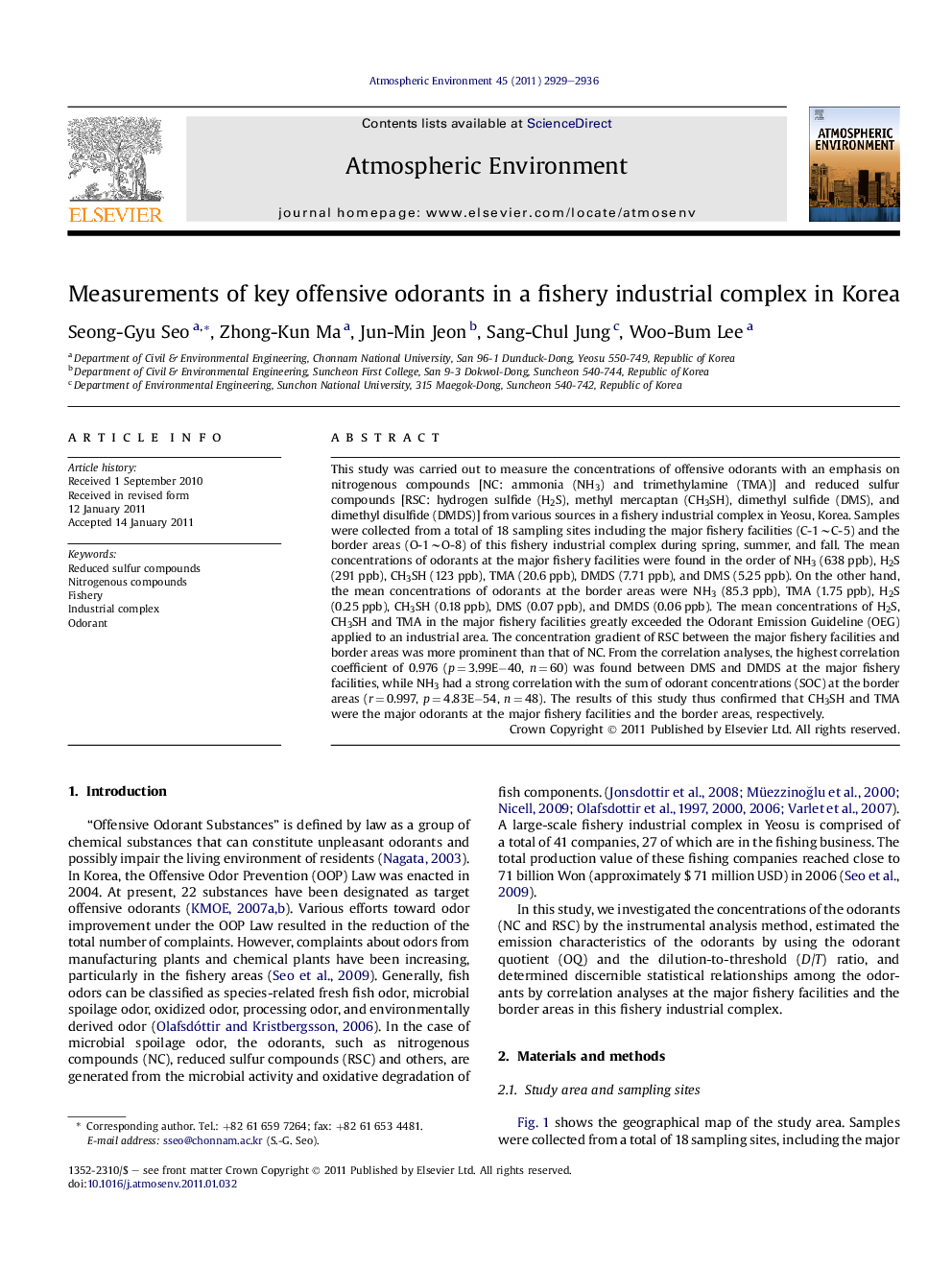| کد مقاله | کد نشریه | سال انتشار | مقاله انگلیسی | نسخه تمام متن |
|---|---|---|---|---|
| 4440034 | 1311043 | 2011 | 8 صفحه PDF | دانلود رایگان |

This study was carried out to measure the concentrations of offensive odorants with an emphasis on nitrogenous compounds [NC: ammonia (NH3) and trimethylamine (TMA)] and reduced sulfur compounds [RSC: hydrogen sulfide (H2S), methyl mercaptan (CH3SH), dimethyl sulfide (DMS), and dimethyl disulfide (DMDS)] from various sources in a fishery industrial complex in Yeosu, Korea. Samples were collected from a total of 18 sampling sites including the major fishery facilities (C-1∼C-5) and the border areas (O-1∼O-8) of this fishery industrial complex during spring, summer, and fall. The mean concentrations of odorants at the major fishery facilities were found in the order of NH3 (638 ppb), H2S (291 ppb), CH3SH (123 ppb), TMA (20.6 ppb), DMDS (7.71 ppb), and DMS (5.25 ppb). On the other hand, the mean concentrations of odorants at the border areas were NH3 (85.3 ppb), TMA (1.75 ppb), H2S (0.25 ppb), CH3SH (0.18 ppb), DMS (0.07 ppb), and DMDS (0.06 ppb). The mean concentrations of H2S, CH3SH and TMA in the major fishery facilities greatly exceeded the Odorant Emission Guideline (OEG) applied to an industrial area. The concentration gradient of RSC between the major fishery facilities and border areas was more prominent than that of NC. From the correlation analyses, the highest correlation coefficient of 0.976 (p = 3.99E−40, n = 60) was found between DMS and DMDS at the major fishery facilities, while NH3 had a strong correlation with the sum of odorant concentrations (SOC) at the border areas (r = 0.997, p = 4.83E−54, n = 48). The results of this study thus confirmed that CH3SH and TMA were the major odorants at the major fishery facilities and the border areas, respectively.
► The key offensive odorants in a fishery industrial complex were evaluated.
► The ammonia concentration was higher than those of any other odorant.
► Trimethylamine and methyl mercaptan were the specific and major odorants.
► The relationships among the odorants were examined.
Journal: Atmospheric Environment - Volume 45, Issue 17, June 2011, Pages 2929–2936